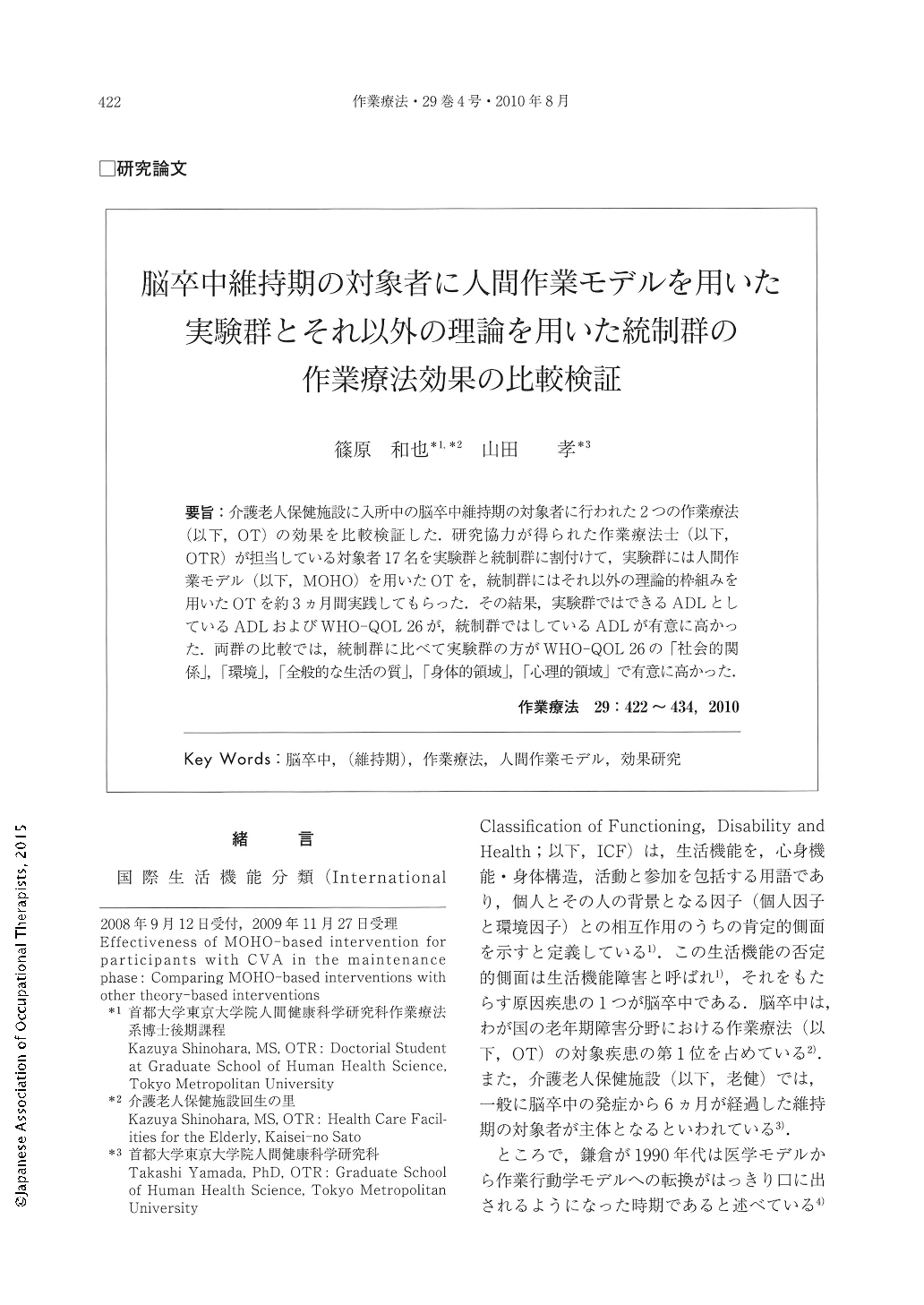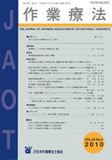Japanese
English
- 販売していません
- Abstract 文献概要
- 1ページ目 Look Inside
- 参考文献 Reference
要旨:介護老人保健施設に入所中の脳卒中維持期の対象者に行われた2つの作業療法(以下,OT)の効果を比較検証した.研究協力が得られた作業療法士(以下,OTR)が担当している対象者17名を実験群と統制群に割付けて,実験群には人間作業モデル(以下,MOHO)を用いたOTを,統制群にはそれ以外の理論的枠組みを用いたOTを約3ヵ月間実践してもらった.その結果,実験群ではできるADLとしているADLおよびWHO-QOL26が,統制群ではしているADLが有意に高かった.両群の比較では,統制群に比べて実験群の方がWHO-QOL26の「社会的関係」,「環境」,「全般的な生活の質」,「身体的領域」,「心理的領域」で有意に高かった.
The purpose of this study was to verify the effectiveness of occupational therapy intervention which reflected the idea of the Model of Human Occupation (MOHO) for participants in the maintenance phase of Cerebrovascular Accidents. The participants were 17 clients in Health Care Facilities for the Elderly. They were divided into two groups. Eight participants in the experimental group were provided the MOHO-based interventions, while 9 participants in the control group were provided other theory-based interventions. As a result, when the data from the two groups were compared, statistically significant differences were found between the data from pre- and post-intervention on social relationships, environment and all the domains in the WHO-quality of life 26 (WHO-QOL26, p<.01), as well as in general QOL, and physical and psychological health domains in the WHO-QOL26 (p<.05). This indicates that the MOHO-based interventions were effective in improving both ADL and measurable comprehensive subjective QOL in the WHO-QOL26, while other theory-based interventions were effective in improving performance activities of daily living.

Copyright © 2010, Japanese Association of Occupational Therapists. All rights reserved.


